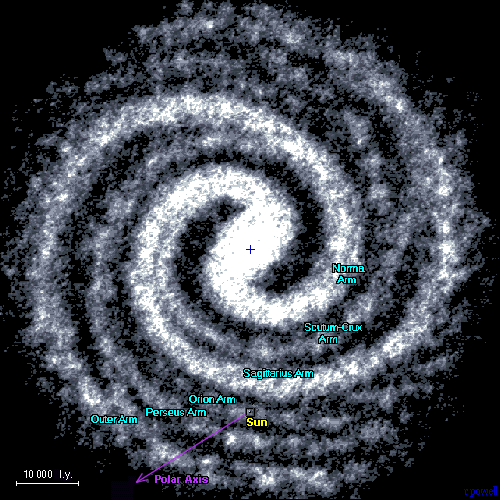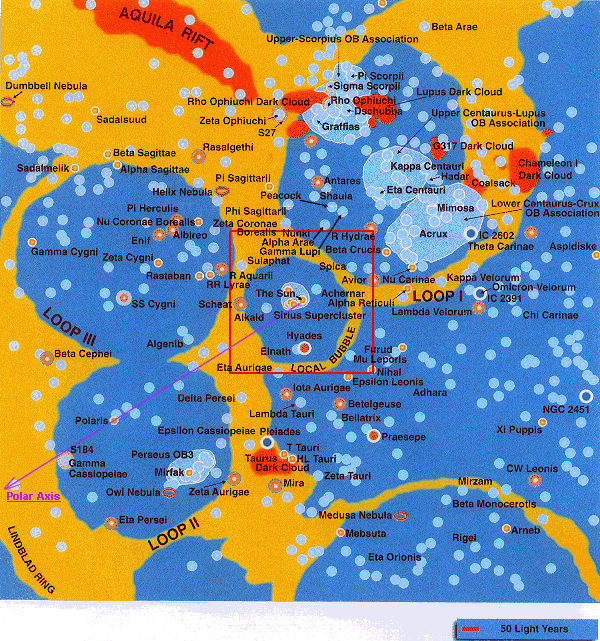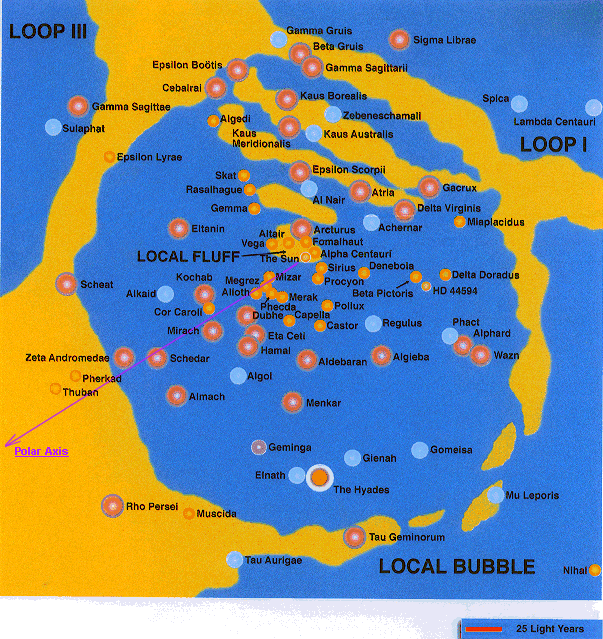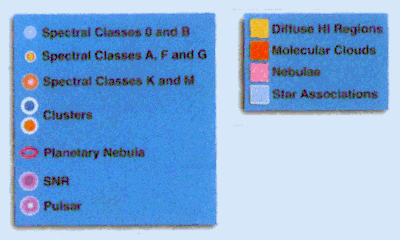and
our galactic neighborhood

This is our galaxy, the "Milky Way", viewed from above. |

This is the galactic environment within 1500 light years from Sol, rich of
gas clouds. |

This image represents the
solar neighborhood. |

The key to the maps above. |